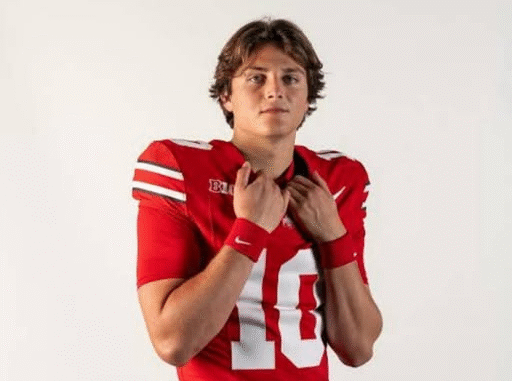
**COLUMBUS, OHIO –** In a move that has sent shockwaves through the college football landscape and ignited a fierce debate about the evolving role of name, image, and likeness (NIL) in the sport, Ohio State quarterback Julian Sayin has reportedly rejected a staggering $6.5 million NIL offer from the University of Southern California. The decision, first reported by [mention source, e.g., reputable sports journalists or outlets], highlights a rare instance of a high-profile athlete seemingly prioritizing team loyalty and personal development over an unprecedented financial windfall.
Sayin, a highly-touted freshman quarterback who transferred to Ohio State from Alabama earlier this year, was reportedly presented with the lucrative offer from USC as part of their efforts to potentially bolster their quarterback room and leverage the growing NIL market. In the current era of college athletics, multi-million dollar NIL deals for top prospects and players are becoming increasingly common, but an offer of this magnitude, particularly for a freshman, is considered extraordinary.
However, sources close to Sayin and the Ohio State program indicate that the young signal-caller ultimately decided to remain with the Buckeyes. The primary motivation behind his decision, according to these sources, was not financial. Instead, Sayin reportedly values the coaching he is receiving at Ohio State, the competitive environment within the quarterback room, and the opportunity to develop within the established culture of the program’
Julian is focused on becoming the best quarterback he can be, and he believes Ohio State is the place to do that,” a source familiar with the situation reportedly told [mention source, e.g., a local sports reporter]. “He’s building strong relationships with the coaches and his teammates, and he sees a clear path for his development here. The money is obviously significant, but it wasn’t the deciding factor for him.”
This reported rejection stands in stark contrast to the prevailing narrative surrounding NIL, where financial incentives are often perceived as the primary driver for player movement and commitment decisions. Sayin’s choice suggests that for some athletes, factors such as coaching relationships, team fit, and the opportunity to compete for championships within a specific program hold significant weight, even when faced with life-altering financial offers.
For Ohio State, retaining Sayin is a major victory, not just in terms of talent retention, but also as a powerful symbol of their program’s appeal beyond financial incentives. It reinforces the message that the Buckeyes offer a compelling environment for player development and success, attracting athletes who are committed to the process and the team.
The reaction to the news has been swift and varied. Many in the college football community have praised Sayin for his apparent maturity and focus on long-term development. Others have expressed surprise and even skepticism, questioning the validity of such a large offer and the motivations behind it.
The incident also reignites the ongoing discussion about the impact of NIL on the competitive balance of college football. While some argue that NIL provides athletes with deserved compensation, others worry about the potential for it to create a “pay-to-play” system that favors programs with the deepest pockets.
Regardless of the broader implications, Julian Sayin’s reported rejection of a $6.5 million NIL offer from USC is an unprecedented moment in the NIL era. It serves as a reminder that while financial considerations are undoubtedly important, for some athletes, the desire for development, team loyalty, and the pursuit of on-field success can still outweigh even the most staggering financial incentives. His decision will undoubtedly be a talking point in college football for the foreseeable future.

Leave a Reply